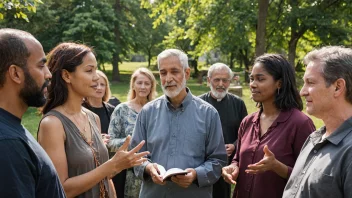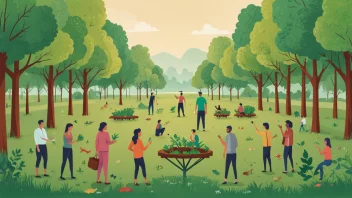The intertwining of spirituality and environmental activism is an emerging dialogue that resonates deeply with many individuals seeking purpose and connection in their advocacy efforts. Spiritual beliefs often inspire a profound respect for the Earth and all its inhabitants, forging a strong commitment to environmental stewardship. Here are five compelling ways spirituality can enhance our approach to environmental activism, encouraging us to take meaningful action and foster a deeper connection with the planet.
1. Recognizing the Sacredness of Nature
Many spiritual traditions view nature as sacred, emphasizing the intrinsic value of all living beings. This perspective encourages activists to see environmental restoration as a spiritual duty. By acknowledging the sacredness of the Earth, individuals can cultivate a deeper reverence for the environment, promoting sustainable practices that honor this connection. Consider the following:
- Participate in nature walks or retreats that emphasize mindfulness and appreciation of the natural world.
- Engage in community discussions that explore the spiritual significance of environmental issues.
- Support initiatives that protect sacred lands and ecosystems.
2. Fostering a Sense of Community
Spiritual practices often emphasize community and collective action. Environmental activism can benefit from this sense of belonging, as individuals come together with shared values and commitments. By fostering community ties, activists can amplify their impact. Here are some ways to build community through spirituality:
- Organize local clean-up events that incorporate spiritual rituals or prayers for the Earth.
- Create forums for sharing stories and experiences related to spirituality and environmental activism.
- Form groups that focus on eco-spirituality, merging environmental education with spiritual practices.
3. Promoting Mindfulness and Reflection
Mindfulness is a practice rooted in many spiritual traditions and can enhance our approach to environmental issues by encouraging reflection and intentional action. Activists can use mindfulness to cultivate awareness of their impact on the planet and develop more sustainable habits. Consider these practices:
- Incorporate meditation or prayer into your daily routine, focusing on gratitude for the Earth.
- Reflect on your consumption habits and make conscious choices that align with your values.
- Engage in journaling to explore your thoughts and feelings about environmental issues.
4. Connecting with Indigenous Wisdom
Many indigenous cultures have long understood the importance of living in harmony with nature. Their spiritual beliefs often emphasize stewardship of the land, offering valuable insights for contemporary environmental activism. By learning from indigenous wisdom, activists can adopt holistic approaches to environmental protection. Here are some ideas:
- Attend workshops or lectures led by indigenous leaders discussing their relationship with the land.
- Support indigenous-led environmental initiatives and respect their rights and traditions.
- Learn about traditional ecological knowledge and how it informs sustainable practices.
5. Inspiring Action Through Spiritual Narratives
Stories and narratives have the power to inspire action and create a shared vision for the future. Spiritual narratives can motivate individuals to engage in environmental activism by connecting them to a larger purpose. To harness this potential:
- Share personal stories of how spirituality has influenced your environmental journey.
- Utilize social media to spread messages of hope and action rooted in spiritual beliefs.
- Collaborate with artists, writers, and musicians to create works that inspire environmental stewardship.
In conclusion, integrating spirituality into environmental activism not only deepens our connection to the Earth but also enriches our collective efforts to protect it. By recognizing the sacredness of nature, fostering community, promoting mindfulness, connecting with indigenous wisdom, and inspiring action through spiritual narratives, we can create a more compassionate and effective movement. As we embark on this journey, let us remember that every small action, grounded in our spiritual beliefs, can contribute to a healthier planet for generations to come.






